




What is Synthetic Fibre? An Introduction
Clothes are one of the main requirements of human beings. They are mostly made of fabrics and these fabrics are made of fibres. There are natural and synthetic fibres.
Artificial fibres which are prepared from raw materials such as petrochemicals are called synthetic fibres. They are mainly synthesised in chemical laboratories. They are the result of extensive research carried out by scientists to replace them with animal and plant-based fibres.
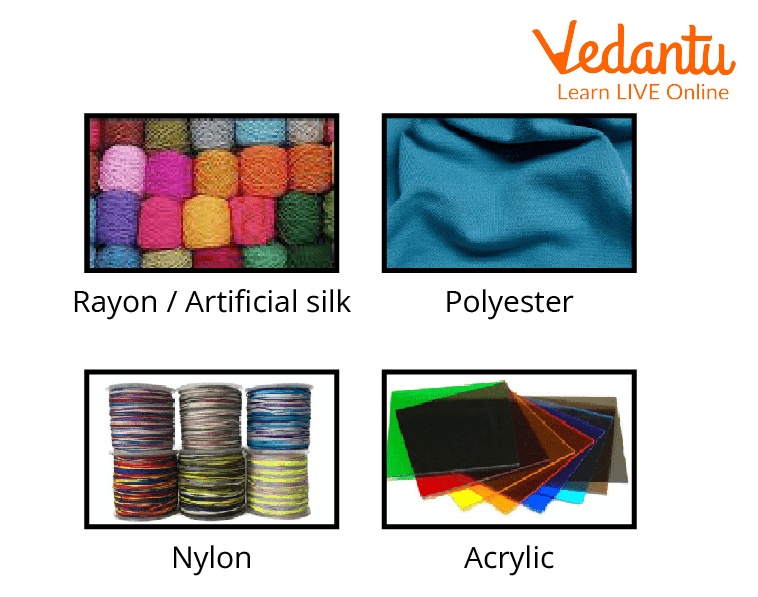
Synthetic Fibres
What are Synthetic Fibres?
Artificial fibres or synthetic fibres are mainly produced from petrochemicals. They are polymers that consist of small units or monomers. These monomers are synthesised from petrochemicals. The carbon atom of the monomers is linked with another monomer and finally, a polymer is obtained.
The word polymer has its origin in the Greek language. Poly means many and mer means units. Thus these fibres are polymers that are made up of small units or monomers.
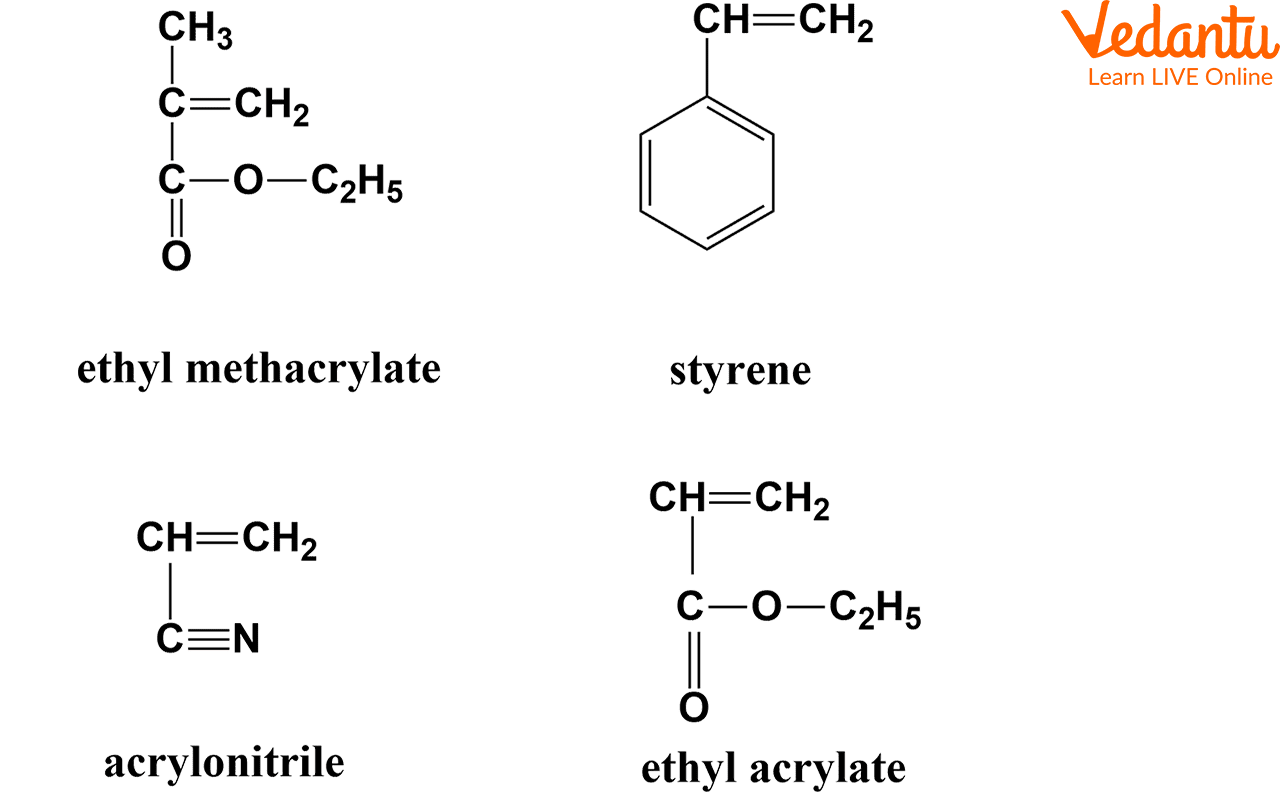
Monomer Structures of Different Polymers
Examples of Synthetic Fibres
The textile industry is hugely dependent upon synthetic fibres. They have various properties and they are economical. That is why they have gained huge popularity and have been useful for various purposes. Rayon, Nylon, and Polyester are three of the most important synthetic fibres.
Nylon
This was the first fully synthetic fibre prepared.
It is a polyamide.
They were synthesised using coal, air, and water.
There are various types of nylon. (Nylon-6,6, Nylon-6, etc)
These have various properties which make them popular.
They are strong, elastic, and lustrous.
It dries quickly.
They are used for various articles like socks, ropes, and tents.
Since they are strong, they are used in parachutes also.
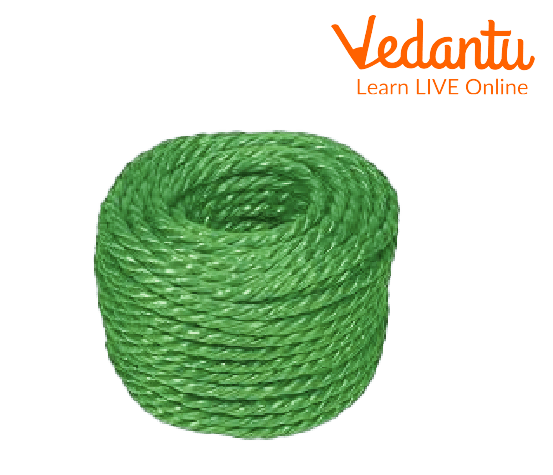
Nylon Rope
Rayon
This is obtained from wood pulp. So it is not fully synthetic.
This is also known as artificial silk.
It has its origin in the French word rayonne.
This was prepared to replace costly natural silk.
These can be dyed with different colours.
They are also mixed with different fibres like cotton and wool to produce bedsheets and carpets.
They are soft, absorbent, and comfortable.
It is shrunk-resistant and dries easily.
Due to their cost-effectiveness and comfortability, they are quite popular.
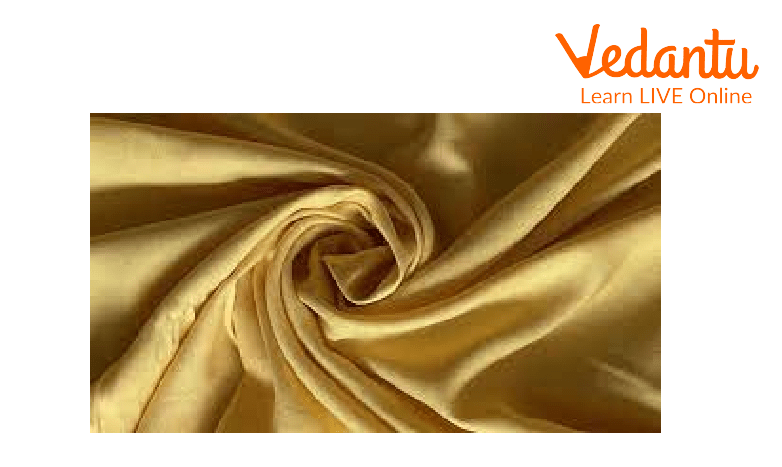
Raylon
Polyester
This fibre is prepared from coal, water, and petroleum.
The chemical called ester is the monomer.
The polyester is easy to wash, economical, and wrinkle-free.
It is quite popular and used to produce various dress materials.
It can retain its shape and is crisp.
They are insulators.
They are stain-resistant.
They are useful in the manufacturing of ropes, nets, jackets, dresses, and raincoats.
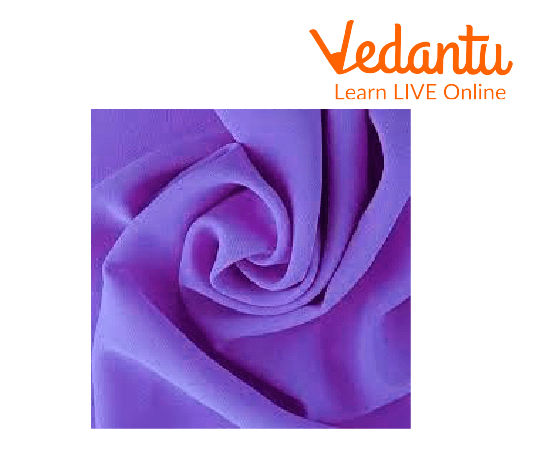
Polyester Fabric
Uses of Synthetic Fibres
There are various uses of synthetic fibres in our day-to-day life Each one has its unique properties and various applications. They are mainly used in sectors like aerospace, apparel, construction, chemical industries, marine, medical, and welding. Here we can discuss various applications of the different synthetic fibres.
Nylon
Clothing: Used in the manufacture of swimwear, sportswear, raincoats, shirts, garments, etc
Industries: Used in the manufacturing of conveyor belts, ropes, parachutes, net, threads, and tents
Manufacturing of plastics.
Rayon
Clothing
Hygiene: Used in tampons and sanitary pads
Food packaging: Used as a substitute for cellophane.
Used to manufacture carpets, bedsheets, home decors, curtains, and table cloths.
Polyester
Clothing: Used to produce shirts, pants, trousers, jackets, hats, and sarees.
Manufacturing of home decor items, bed sheets, curtains, pillowcases, and blankets.
Used in the manufacturing of upholsteries, conveyor belts, safety belts in automobiles, and mouse pads.
They are also used in the manufacturing of dielectric films in capacitors, film insulation in insulation tapes, and used in LCDs (Liquid crystalline display).
They are also used in the manufacturing of bottles.
Advantages and Disadvantages of Synthetic Fibres
Advantages
They are wrinkle-resistant.
They are easy to wash and easy to use.
They are durable.
They are elastic and strong.
They are cost-effective.
They are lightweight and transportation is easy.
They are good absorbents and will blend well with other fibres.
They are more colourfast than natural fibres.
They are resistant to heat, water, moth, and bacteria.
Disadvantages
They are flammable.
They are repelling and it’s not comfortable to wear during hot summers.
They can be carcinogenic.
They can be toxic to the skin.
They are not environment-friendly.
They can generate waste.
Important Questions
1. Why is it not advisable to burn synthetic fibres?
Ans: When they are burnt, large amounts of harmful gases are evolved and result in air pollution. Also, since they are inflammable they melt easily. They are synthesised using chemicals. Since they are chemically synthesised they produce harmful chemicals and they are not biodegradable. So these will cause problems for our mother nature.
2. What is the importance of synthetic fibres in our day-to-day life?
Ans: They have high strength and flexibility, so they can be used for making ropes, parachutes, and other safety equipment. They are shrink-resistant, economical, lightweight, and can be easily dyed. So they are suitable for clothing, home decor, and curtains. Also, they have insulating properties and they are used in electrical appliances. That is why these are important in our day-to-day life.
Conclusion
Synthetic fibres are artificial fibres that have huge popularity and are very useful in our daily life. They have various properties and due to this, they have large-scale applications. They have both advantages and disadvantages. Due to their wide range of applications, they are used extensively, but we also have to keep an eye on their growing environmental impact. We have to make them more sustainable and environmentally friendly so that they can be used more efficiently.
FAQs on Synthetic Fibres
1. What are the three synthetic fibres?
Fibres are the smallest units of fabrics. They can be synthesised both chemically and naturally. Synthetic fibres are synthesised chemically using petrochemicals and they are artificial. There are mainly three types of synthetic fibres. They are Rayon, Nylon, and Polyester. They have a wide range of properties and applications. They are widely used in clothing, home decors, bedding and various other applications. They have properties such as shrink resistance, strength and insulation. Due to these, they are also used for electrical appliances.
2. Why is nylon called synthetic fibre?
Nylon is made up of amides and it is fully made up of artificial materials. The raw materials used for manufacturing nylon are coal, water, and air. Nylon is the first fully synthetic fibre. It was synthesised fully chemically in 1931. Nylon is very useful for various applications such as clothing, conveyor belts, home decor, raincoats, and curtains. Also, they do not absorb moisture and can be used during the rainy season. That is why they are called synthetic fibre.
3. Where are synthetic fibres made from?
Synthetic fibres are man-made fibres. They are made up of petrochemicals. They are polymers made from small units called monomers. Many monomers group together using chemical bonds to form polymers. These synthetic fibres are polymers. Synthetic fibres are mainly made up of the process known as polymerisation. In that process, smaller molecules or monomers chemically link with each other and form larger molecules called polymers. Like natural fibres are used for clothing, these can also be woven into fabrics.











